Surfing Accessories
Eco Friendly Surfboard Wax
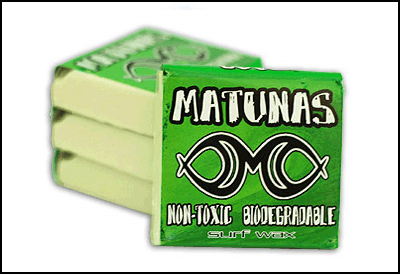 The grand irony of surfing is that our equipment leaches toxins into the ocean. This is true of our surfboards, board shorts, wetsuits, sun block and even our wax. In fact, petrochemicals are in 95% of surf wax found on the market today. According to Philsorganicsurfwax.com, Paraffin surf waxes are the most common and paraffin is the final byproduct in the petroleum refining process. This petroleum based wax will eventually fall off a surfboard, affecting our beaches, reefs, and other delicate ecosystems.
The grand irony of surfing is that our equipment leaches toxins into the ocean. This is true of our surfboards, board shorts, wetsuits, sun block and even our wax. In fact, petrochemicals are in 95% of surf wax found on the market today. According to Philsorganicsurfwax.com, Paraffin surf waxes are the most common and paraffin is the final byproduct in the petroleum refining process. This petroleum based wax will eventually fall off a surfboard, affecting our beaches, reefs, and other delicate ecosystems.
So when we started hearing about natural and organic surfboard waxes, the two questions we had as scientists are: is it really better for the environment and does it perform? To get a better idea, we talked to a few wax makers including Chris of Matunas, John Dahl of Sticky Bumps & the guys from Bubble Gum Surfboard Wax.
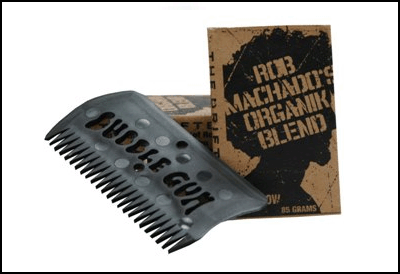 Surfers may now choose alternative surf waxes that use natural ingredients including Mantunas' local and organic wax line, Bubble Gum's Rob Machado inspired eco friendly stick and the Sticky Bumps Soy series. These options include any or all of soy based wax, products, bees wax, and other petroleum-free and biodegradable material.
Surfers may now choose alternative surf waxes that use natural ingredients including Mantunas' local and organic wax line, Bubble Gum's Rob Machado inspired eco friendly stick and the Sticky Bumps Soy series. These options include any or all of soy based wax, products, bees wax, and other petroleum-free and biodegradable material.
Matunas, for example, uses only local ingredients. In fact, the guys at Matunas use only left over produce from local farms in Santa Cruz, California. They use no chemicals or additives while using organic strawberries, raspberries, and jasmine for scent. We don’t use paraffin in our wax,” points out Matt from Matunas. “No chemicals. We grow it, we do it…all on the farm. We can’t tell people what to like, but it’s all natural, has the same price, and works just as well.”
While it is awesome to see these three companies all working to be a bit more friendly to mother earth, the big question we needed to get an answer to was if these waxes work. After all, it isn't worth using an organic surfboard wax if you keep slipping off your board and have to switch back to a paraffin wax.
We obtained samples of each wax and tested them on a few boards in a range of water temperatures. Wax is a funny thing in that the variance level isn't huge, but everyone seems to have a preference. Some waxes are tackier while others last longer. Our testing showed that were some noticeable differences in the waxes, they were all able to perform how we needed them to. They stuck to the board, made good deep bump patters and lasted through the session. (Personally, I liked Matunas on my log and Bubble Gum on my thruster but I have been known to be a bit of a wax snob.)
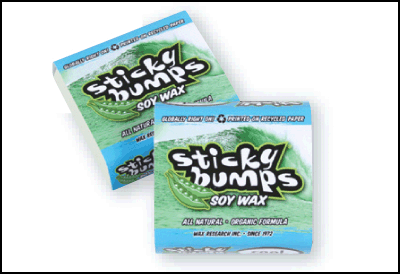 While everyone will have their own wax preferences, at SurfScience, we love to see this forward progress in developing non-toxic materials for the sport of surfing. When asked what is on the horizon for surf wax, Sticky Bumps’ Dahl was tight lipped, but clearly excited about the future. “There are new waxes on the market now and on the horizon made of new substances. There’s nothing dramatically new in the formula over the last few years, but it’s coming and it will change things.”
While everyone will have their own wax preferences, at SurfScience, we love to see this forward progress in developing non-toxic materials for the sport of surfing. When asked what is on the horizon for surf wax, Sticky Bumps’ Dahl was tight lipped, but clearly excited about the future. “There are new waxes on the market now and on the horizon made of new substances. There’s nothing dramatically new in the formula over the last few years, but it’s coming and it will change things.”
With these results in mind, we would like to offer a challenge to you, the surfer. Go out and buy a stick of each to test out. They should be easily available at your local surf shop and come to under $5 total. Then here is the hard part... go surf. See what you like and if one of them fits your preference, support them. After all, if you can do a little bit to protect mother earth who gives you so many fun waves and you don't have to sacrifice performance in the process, why not do it?
Let us know what you think and which wax is your favorite by commenting below. We're looking forward to hearing the results.








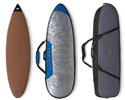
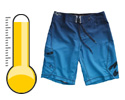
3 Comments